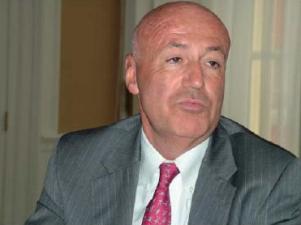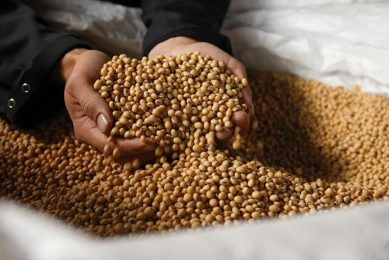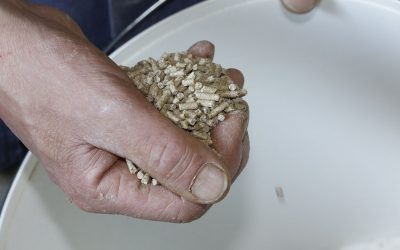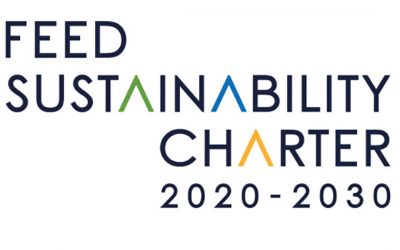Fefac president: ‘Europe is the feed lab of the world’

“We, in Europe, develop the sustainable technologies that will help feed the world in the future,” said Patrick Vanden Avenne, president of the European feed manufacturers association Fefac at their 54th General Assembly in Bruges in early June.
In early June around 80 delegates gathered in the historical centre of Bruges, Belgium for the 54th General Assembly of Fefac, representing the European feed industry. “The past year was the year of ‘living dangerously’ for the feed industry," Fefac president Patrick Vanden Avenne said in his opening speech. “We had to face tremendous volatility of raw material prices since last summer with the resulting need for a sharp increase in working capital and difficulty in managing our margin and profitability,” he said. At the same time the livestock producers had the greatest difficulty in passing on their higher production costs to the slaughterhouses and ultimately the consumer. At the end of 2010 the dioxin crisis in Germany exacerbated the concerns in the European pig sector especially.
But despite the crisis that the industry had to face Vanden Avenne wanted to bring a positive message. “Our European feed and livestock sector showed its great resilience,” he said and concluded that “it has remained overall and through the crises a vibrant sector showing the strength to rebound and to innovate.” The Fefac strategy is to continue promoting R&D, efficiency and sustainability. “The EU is the feed laboratory of the world,” Vanden Avenne said. He explained that because of the legal constraints and market developments the feed sector quickly responds to change. “Most innovations are developed in Europe and we see that after a while they are exported and adopted in countries outside the EU.”
“The development model for the European feed and livestock sector is indeed about two things: technological innovation and sustainability. They are the two sides of one coin, they are Siamese twins,” Vanden Avenne said. As an example the Fefac President announced the reintroduction of processed animal proteins (PAP), which will evidently make a contribution to a sustainable reduction of imported proteins and a more sustainable use of what is now often considered waste material.
“Increasing the use of biofuel co-products for monogastric animals will also lead to a more sustainable use of indigenous proteins while a large effort of R&D, and development of new production technologies and additives will be needed to maximise the potential value of these biofuel co-products,” Vanden Avenne said.Products such as DDGS are in demand in Europe and companies would gladly import larger volumes, especially for ruminant feeds, but current GMO-rules prohibit this. “The hard-won concession from the EU Standing Committee on Biotechnology, [on allowing traces of non-authorised, but EFSA risk-assessed GM events in feed supplies] is an important step forward but insufficient to keep market access to vital feed imports,” Vanden Avenne said.
Fefac’s meeting was further dedicated to the feed impact on animal health and animal welfare. Several speakers commented on this topic. Jim Moynagh (see photo), head of the unit Animal Nutrition of DG Sanco of the EU Commission elaborated on the commission’s perspective on the EU health regulation on feed. The underlying motto of the EU is ‘prevention is better than cure’. This EU strategy, laid out in the Animal Health Law (http://ec.europa.eu/food/animal/diseases/strategy/index_en.htm), is expected to be proposed in 2012. “In the end a preventative strategy is cheaper than a reactive one,” Moynagh said. “With a reactive strategy in the case of an outbreak the general public is faced with huge costs, while with being proactive the initial investments are high, but the costs in the end are much lower.”
Another pillar of the DG Sanco policy is animal welfare. A major milestone for animal welfare was attained with the Treaty of Lisbon in 2009. The recognition that animals are “sentient beings” is now part of Article 13 of the Treaty on the Functioning of the European Union. With the Lisbon Treaty, all Sanco policies came under the ordinary legislative procedure giving the European Parliament a direct influence on the future debate on the welfare of farm animals. In May 2010, the Parliament called in a resolution for the adoption of a European general animal welfare law as well as for the establishment of a European network of reference centres.
The Commission is currently working to adopt a new strategy for animal welfare by the end of this year, Moynagh informed. “Further actions on enforcement and harmonisation are required. Enforcement of animal welfare remains a serious issue and efforts need to be maintained and enhanced in order to ensure proper implementation. The strategy should also aim at ensuring fair competition between EU and non-EU producers as well as empowering EU consumers to make informed choices about the animal welfare dimension of their food.”
Veterinary medicines
The European commission realises that the availability of effective veterinary medicines is of vital importance. “We must remember that as well as the big “headline” diseases such as Foot and Mouth Disease and Classical Swine Fever, the diseases of lower significance can seriously hamper production and therefore the competitiveness of the farming sector, or even potentially endanger our food supply,” Moynagh said.
The current review of the rules on veterinary medicines covers everything – from authorisation, production, distribution and advertising rules, up to homeopathic medicines. “This is a huge challenge to which everyone must rise. But, let us not forget, this challenge also provides a massive opportunity for a fundamental re-think of how to modernise and improve the system,” he said. The Commission aims to adopt a legal proposal on veterinary medicinal products next year.
The Commission also aims to make a legal proposal on medicated feed. There is evidence that the current situation leads to distortion concerning the production and use of medicated feed. Regulation (EC) No 767/2009 on the placing on the market and use of feed has just been delivered. Furthermore the use of feed additives in animal feed is regulated through (EC) No. 1831/2003. Here also coccidiostats and histomonostats have a special status within this regulation. Although there is discussion on moving these products to the antibiotic group, Wolfgang Trunk (see photo), policy officer at DG Sanco in Brussels, confirmed that it is the intention to maintain the current status. He said the products are indispensible in animal feed, simply because there are no alternatives.
Furthermore Trunk also said that the use of antibiotics cannot be regulated by impeding the route of animal feed. “Studies show that there is no correlation. And as soon as this would happen, there will be another route in which the antibiotics will be administered,” he said. Trunk also said that medicated feeds will remain and can only be administered through veterinary prescription.
Antimicrobial resistance
Resistance to antimicrobials (AMR) as a result of abundant use in livestock farming is a hot topic as more resistant bacteria emerge. Moynagh said that “appropriate use of antimicrobials by all parties is the only way forward if we want to treat patients and animals with effective medicines in the future.” He said that the focus must be on the key parties: pharmaceutical industry, feed industry, veterinarians and farmers. “All must take their responsibility to reduce the very serious public health risks in relation to AMR.”
“The use of antibiotics cannot be regulated by impeding the route of animal feed.” |
For a start the European Platform for the Responsible Use of Medicines in Animals, EPRUMA, was initiated to promote appropriate antimicrobial use in animal husbandry. To encourage a truly holistic approach the Commission is developing a Communication on AMR to be presented on 18 November 2011 – the European Antibiotic Awareness Day for 2011. This Communication will contain concrete proposals for further actions to address the problem of AMR for both public and animal health.











